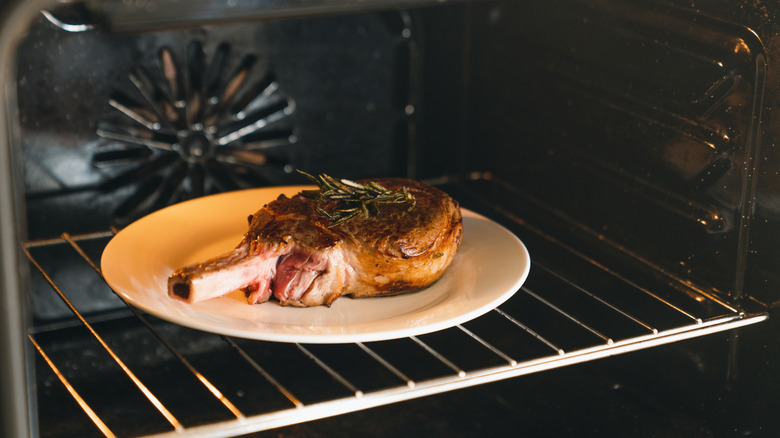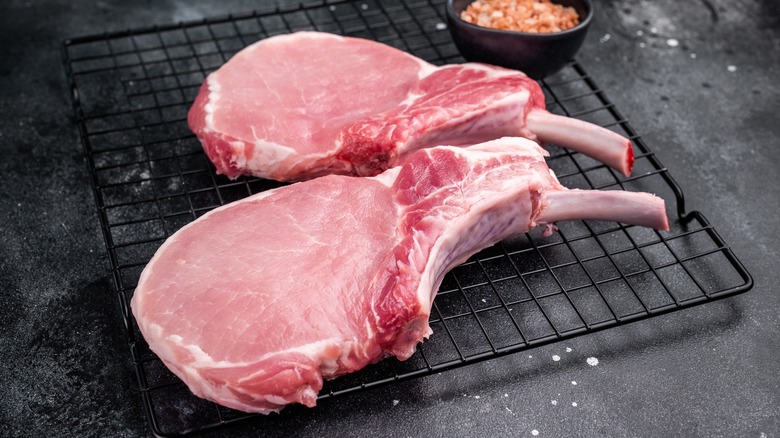Here's Why Thickness Matters When Broiling Meat
If you've never used the broil function on your stove before, it can be a bit intimidating. That's because it applies super-hot, dry heat, which can burn foods if they're left in for even a second too long. Still, many cooks and recipe-makers like to use the broiler, especially for adding a crust or char to meat. Food Republic turned to Imam Mansoor Rafiq Umar, CEO and president of Halal Watch World LLC, for his expert advice, and he told us, "The thickness of the meat determines the distance it should be placed from the broiler to achieve even cooking."
Thinner cuts, he said, like a half-inch flank steak or a chicken cutlet, are placed with the oven rack about three to four inches from the broiler. "This is effective because thin slices cook quickly and heat doesn't oversaturate," he explained. For thicker cuts — such as a ribeye that clocks in at an inch and a half, or a pork chop — he places the oven rack five to six inches down. "The additional distance slows surface cooking, allowing heat to penetrate farther without scorching the exterior before the interior reaches the desired temperature," Umar instructed. This ensures the meat never overcooks and comes out perfectly done.
Tips for perfectly broiled meat
Of course, not all meats are made for the high heat of broiling, but some fare better than others. "I prefer tender, well-marbled cuts like ribeye, New York strip or boneless chicken breasts," said Imam Mansoor Rafiq Umar. He continued by telling us these cuts do well because they retain their juiciness and flavor with a good sear. But before he broils, Umar considers how fatty the meat is. For example, leaner pieces like chicken could dry out, so he might brush a little olive oil on them or use a quick marinade to seal in some moisture.
He is also vigilant about watching the cooking time closely, because "one minute too long can ruin a thin steak." He advises keeping a meat thermometer on hand, because it's vital for accuracy. Fully preheating the broiler and leaving the oven door slightly ajar for electric ovens keeps the heat on an even keel, which is key to great results, Umar said. Finally, he recommends keeping tougher cuts of meat like brisket or bottom round out from under the broiler. "They'll turn chewy under high heat ... and are better suited for slow braising," he suggested.


